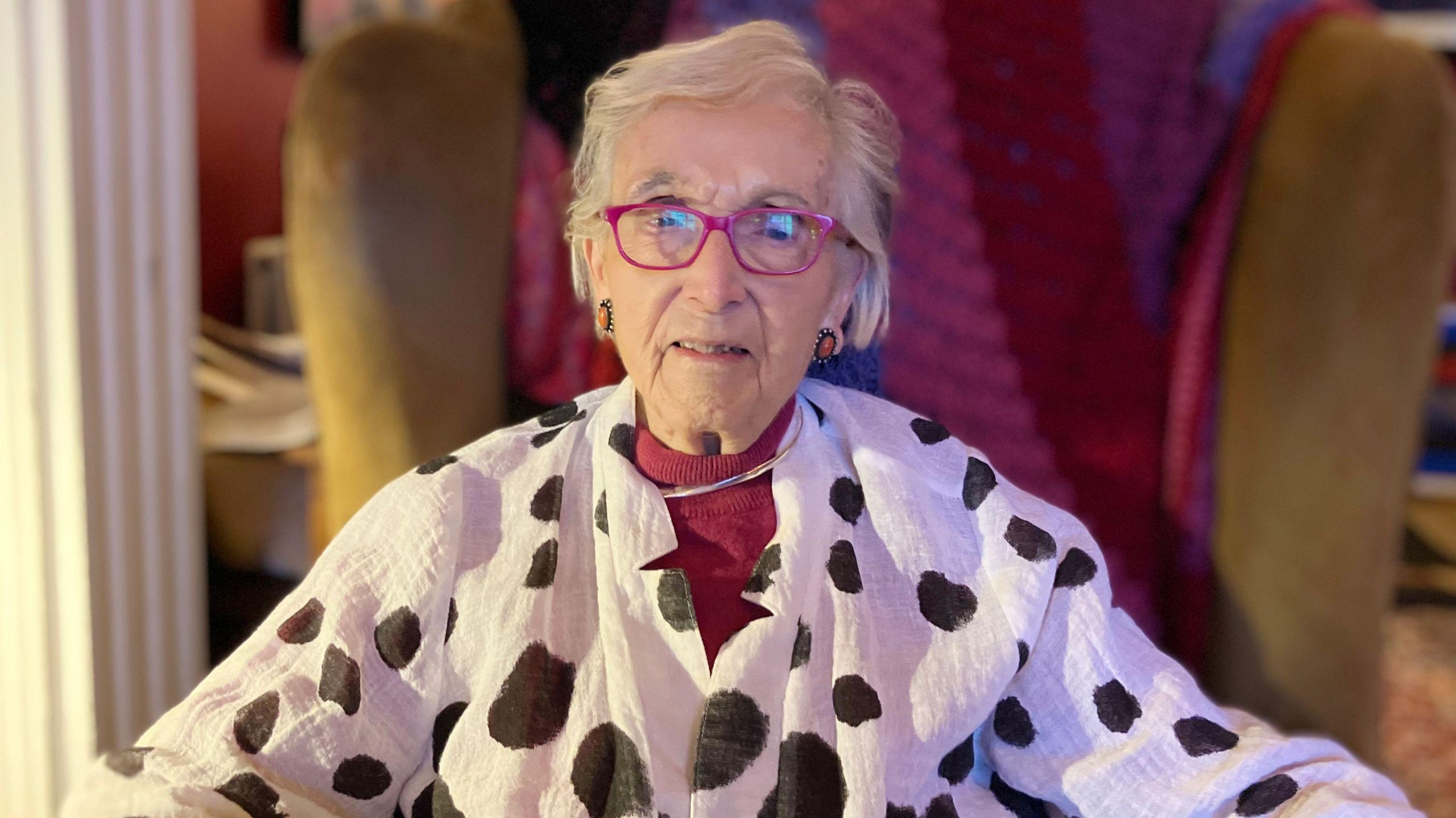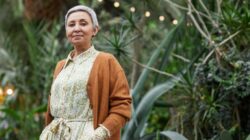A Life of Color and Resilience
Glenys Cour, an acclaimed artist, is just weeks away from celebrating her 101st birthday, and she still can’t believe how lucky she has been. Her life has been a vibrant journey filled with passion, love, and artistic expression. From the moment she first picked up a brush, or rather, her fingers, Glenys has dedicated herself to the world of color. She has created art in many forms—painting, printmaking, collage, and stained glass—and has even shared her talents as a teacher.
She continues to paint every day at her home in Mumbles, overlooking Swansea Bay. What makes her approach unique is that she never uses a paintbrush. Instead, she works with oil paint using torn pieces of fabric and her hands, finding a sense of immediacy and excitement in this method. “It’s exciting, it’s terribly exciting,” she says. “Color is the most important thing, certainly in my work as well as in my life.”
Tolong support kita ya,
Cukup klik ini aja: https://indonesiacrowd.com/support-bonus/
Glenys’ career brought her into contact with some of the most influential figures in Swansea’s cultural scene. Among them was the great Welsh poet Dylan Thomas, whom she fondly remembers as a “really naughty boy.” Her social circle also included composer Dan Jones, poet Vernon Watkins, painter Ceri Richards, and sculptor Ranald Cour, who would later become her husband. This “pretty hectic” social life contrasted sharply with her childhood, which was marked by isolation and a sense of being different.
Born in Fishguard, Pembrokeshire, in 1924, Glenys was the only child of a colliery manager. Her family moved around the south Wales valleys seven times, living in manager’s houses that were separate from the workers’ homes. During the Depression of the 1930s, the gap between her comfortable life and that of the working-class families left her feeling disconnected from other children. She recalls walking past terraced houses and hearing children playing, pretending to be her. “They were playing school and I heard them say ‘now I’m Glenys Carthew.’ And I realized I was posh,” she said. “It was shattering actually.”
Despite these challenges, Glenys found solace in books and imagination. Her father often read to her, and she began creating her own fairy stories, which she would tell to classmates. She also spent hours drawing on paper her father brought home from work and experimenting with watercolors to create new colors. Becoming an artist seemed inevitable, and she thrived at Cardiff School of Art, where she studied under the renowned painter Ceri Richards. He is considered one of the most important British artists of the 20th century. “He opened my eyes, he was wonderful,” she said. “He taught me how to see.”
After college, Glenys took a teaching job in Fishguard but soon moved to Swansea to teach art at Glanmor Girls School. It was there, during evening classes in life drawing, that she met her future husband, sculptor Ronald Cour. The moment she saw him, she was smitten. “The funny thing that stood out was the fact he had beautiful hands,” she recalled. To get his attention, she hid in the ladies’ toilets and bumped into him as he left. They went for a drink at the now-demolished Bush Hotel, where she met Dylan Thomas, a friend of Ronald’s.
At 25, Glenys married Ronald, who was 10 years her senior. Their life together was full of music, theater, and creative energy. They had a daughter, Jane, and both their careers flourished. But in 1978, tragedy struck when Ronald died suddenly at 63. “I didn’t think I could live,” she said. “Honestly, I really thought I couldn’t live without him.” She took a week off work and then threw herself into painting. “I don’t think I’d have got through it if I hadn’t,” she said. “I immersed myself in it. I go through that door and forget everything.”
Ronald remains a significant part of her life, and she still speaks to him. Her living room is filled with photos of him and his sculptures. After his death, she entered a period of intense creativity and spent three decades teaching at Swansea College of Art. “I love people and I love teaching,” she said. “To be standing up in front of a group of students and trying to open their eyes, there’s nothing more thrilling than that.”
Today, her artworks are in private and public collections across Europe and the US. In 2014, a major retrospective of her work was held at Swansea’s Glynn Vivian Art Gallery. When asked about her longevity, she credits her work. “I think it’s the fact that I’m working, I’m sure of it, it’s a necessity,” she said. “I could never get over my good luck for the whole of my life. I’ve been blessed. I’ve had a fantastic life. I really, really mean it.”







